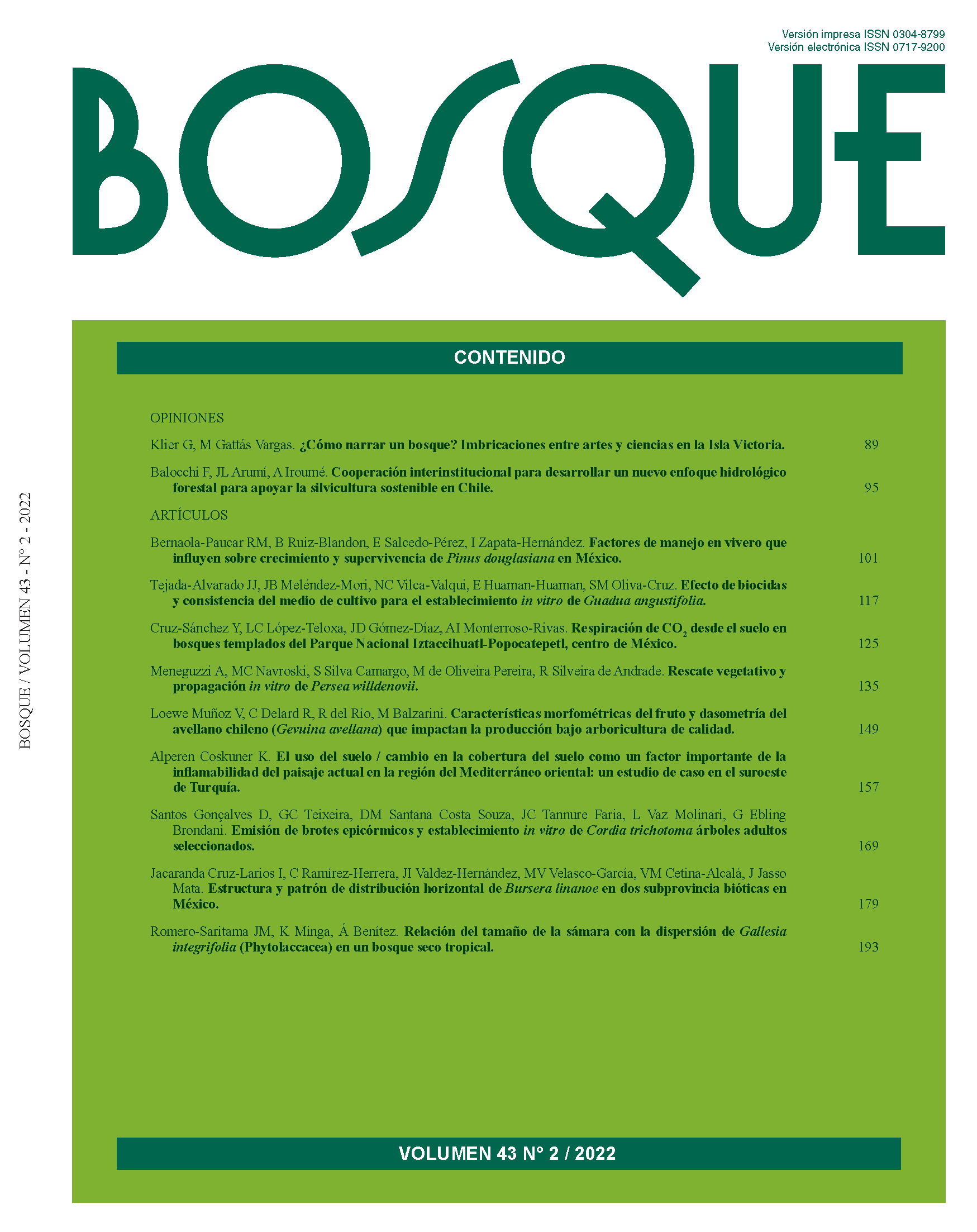Vegetative rescue and in vitro propagation of Persea willdenovii
Main Article Content
Abstract
Persea willdenovii is a native species popularly known for its high potential for medicinal use. Due to problems in low seed production and germination, vegetative propagation appears promising. Thus, we seek with this work to evaluate techniques of vegetative rescue and the potential use of shoots obtained in tissue culture. Adult trees of the species were used to apply total and partial girdling treatments and obtain pruned branches as vegetative rescue techniques. Shoot production was monitored over time (90 to 240 days). Sprouts were used for in vitro propagation, and disinfestation treatments were carried out using biocides such as NaClO and Plant Preservative Mixture TM (PPMTM), changing the time and concentrations of the products. Multiplication was also tested using doses of 6-benzylaminopurine (BAP) and media and the potential for callogenesis under combinations of BAP and Naphthalene Acetic Acid (ANA). The vegetative rescue by complete or semi-girdling has the potential to produce shoots, though pruned branches proved to be one of the best techniques for rescue. In the micropropagation, the use of biocides such NaOCl for a long period of time (2 % for 20 min) with PPMTM added to the culture medium shows a potential for disinfestation in the in vitro establishment. For in vitro multiplication, the usage of WPM and BAP (2 a 4 g L-1) promotes higher shoot length, shoot number and leaf number. For indirect organogenesis by leaf segments, the cultivation with BAP and ANA was not responsive to the induction of callogenesis.

